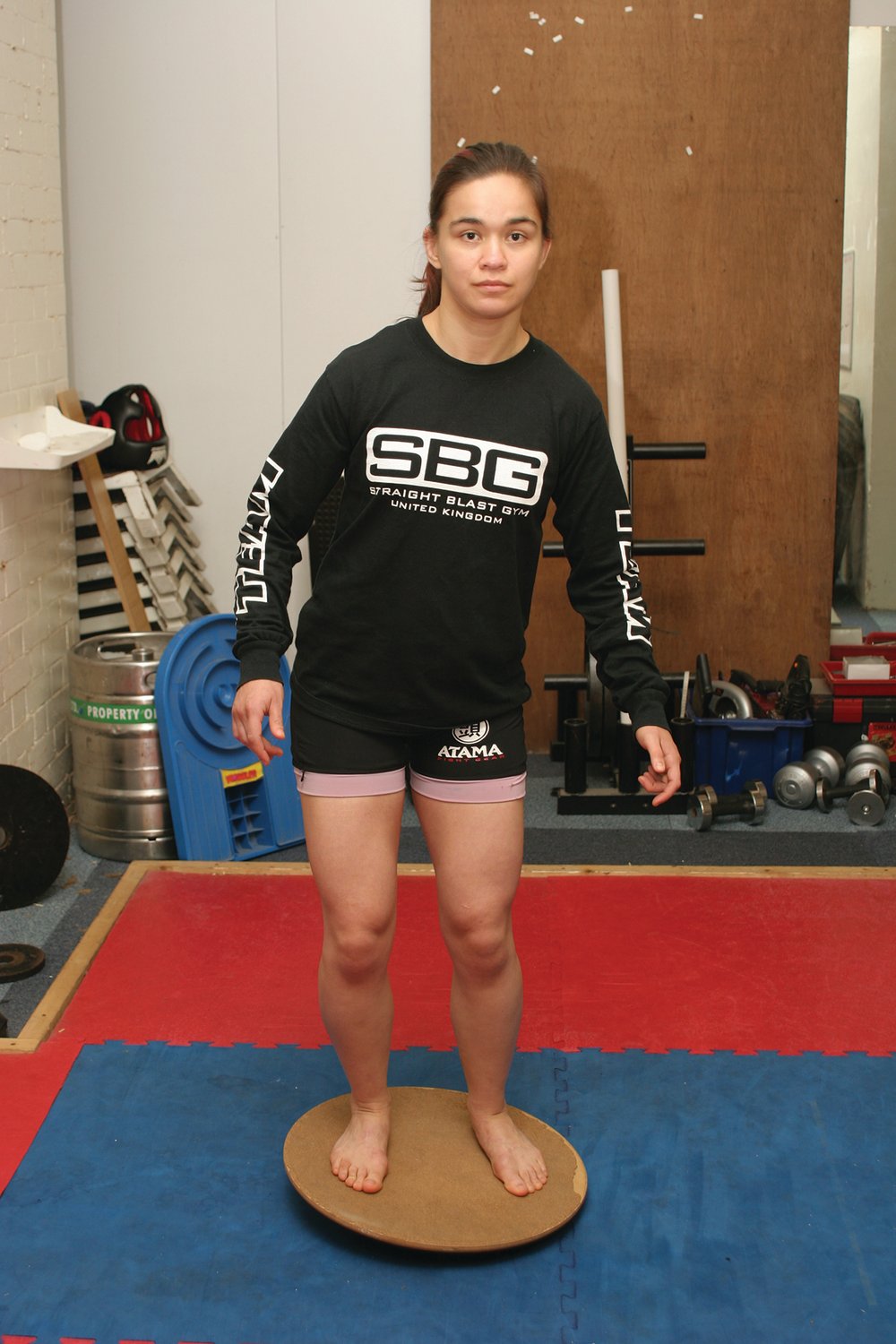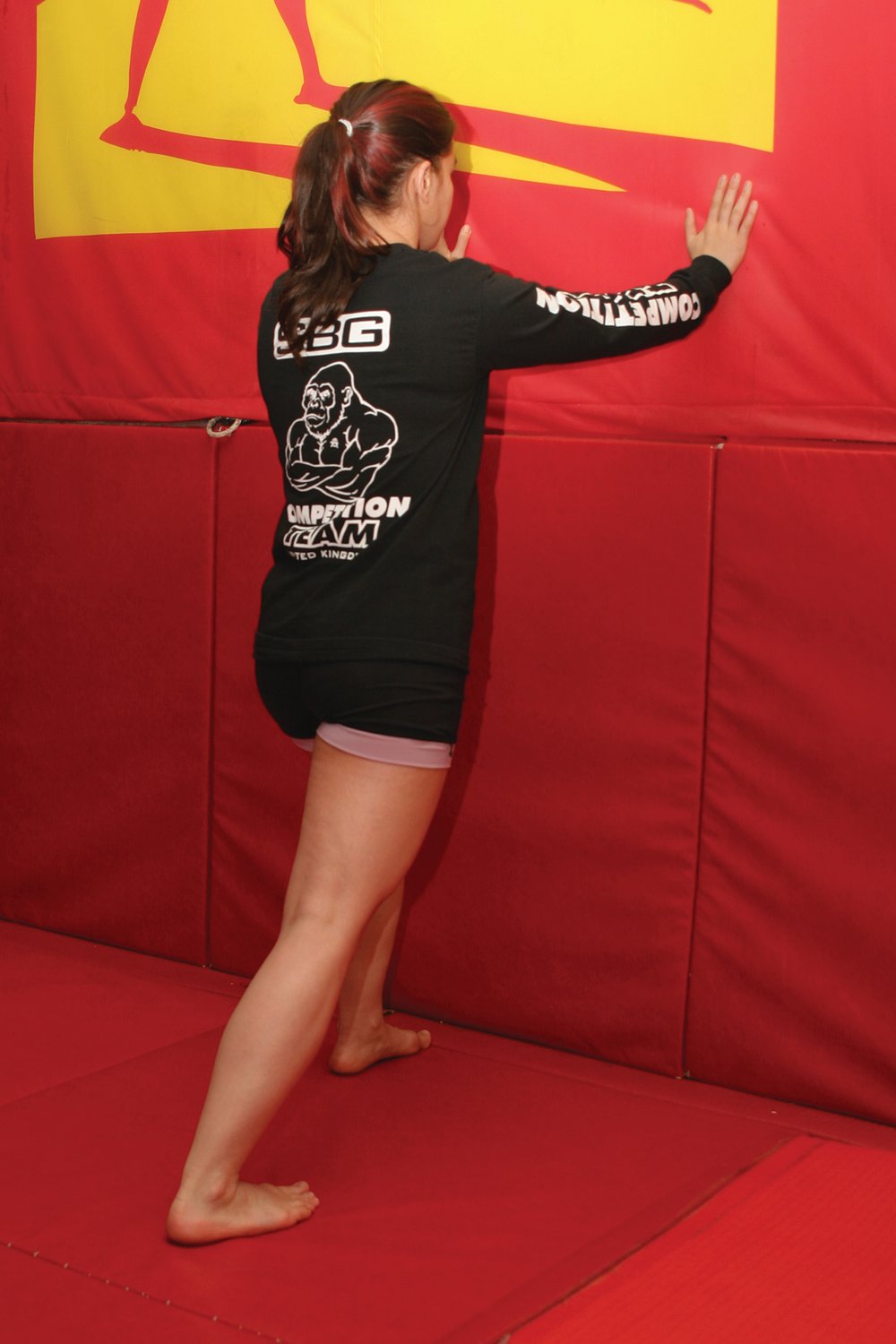
Issue 041
September 2008
Ankle injuries are common in most sports and MMA is no exception. While fighters don’t have to worry about chasing a ball around on an uneven surface, we do have plenty of other ways to damage an ankle. For a fighter with a recurring ankle injury there’s a minefield of potential pitfalls, ranging from being swept, trying to keep balance while defending a single-leg takedown, or simply being ankle locked.
By far the most common ankle injury is the inversion ankle sprain. This happens when you ‘go over on your ankle’. The foot twists inwards, stretching the ligaments on the outside of the ankle. Although spraining the ankle in the other direction (damaging the ligaments on the inside) is possible, it is far less common.
The ankle sprain can be one of those injuries that just keeps coming back. You take six weeks off training to rest it, and then on the first training session back you trip on a gap on the mats and it feels like someone has just ripped your foot off.
Correct rehabilitation of an ankle injury is vital to avoid it becoming a persistent problem. This is best done in consultation with a sports injury practitioner such as a physiotherapist or osteopath. If you are currently suffering from an ankle injury then seek professional advice before trying these exercises.
When it comes to preventing ankle injuries, the buzzword everyone talks about is ‘proprioception’. In simple terms, proprioception is your ability to know where your body is in space. If you close your eyes, you should still be able to touch the tip of your nose with a finger. The reason you can do this is because nerve endings in your joints and muscles constantly feed back to your brain, allowing it to work out exactly where the tip of your finger is in relation to the rest of your body. This ‘sixth sense’ is something we all take for granted until it goes wrong.
What does this have to do with ankles? When you’re training, there are many times when your balance shifts and your foot begins to turn under, putting strain on those ankle ligaments. Normally, your brain notices that something bad is about to happen, and you’ll make the adjustment without even noticing. For some people though (especially those with a recurring ankle injury), this doesn’t happen quickly enough. Your brain doesn’t get the message in time, so every slight stumble or shift of weight has the potential to turn into a full-blown ankle sprain. This is where proprioceptive training comes in.
Unstable surface training
For rehabilitating and preventing ankle injuries, unstable surface training is a great tool. If you have a recent ankle injury, this may be too advanced to begin with. If in doubt, start by just balancing on one leg (within reach of a wall or other support to prevent further injury if you fall) and gradually increase the level of difficulty as you gain confidence. Think about safety. It’s easy to get a bit carried away with this kind of training, but remember: being able to balance on an exercise ball won’t do your ankles much good if you fall off and break your leg.
Wobble boards are always useful to have around and come in a variety of shapes and sizes.
They are available to buy on the Internet and from physiotherapy supply companies.
If you don’t have access to a wobble board, you can also use a semi-inflated wobble disc, or simply stand on one leg on a pillow. Make sure you are able to support yourself if you fall. To make the exercise more difficult, try throwing and catching a light ball while balancing.
Backwards / forwards and lateral hops
The fast direction changes in this exercise help to develop ankle stability while moving. Lay a skipping rope out on the floor, or use a line between mats.
Hop forwards and backwards across the line. Start with three sets of ten hops on each leg. Repeat the exercise hopping from side to side.
Calf stretches
Many fighters have tight calf muscles, which prevent them from getting a full range of motion at their ankle joint. This can also lead to other problems, including Achilles tendon tears or tendonitis. There are two muscles in the calf, and tightness in either can lead to problems. One is the gastrocnemius, which also helps to bend the knee, and the other is the soleus, which only works at the ankle. They each need a slightly different stretch.
Stretch 1 – Straighten your arms and place both arms on a wall, with one leg in front of the other. Keeping your back heel on the floor and your back leg straight, bend the front knee and move your hips forwards. This exercise stretches the gastrocnemius muscle. You should feel it in the back lower-leg. Hold the stretch for 30 seconds and repeat twice on each leg.
Stretch 2 – follow the instructions as above, but this time keep the back leg bent as you do the stretch. This puts more emphasis on the soleus muscle. Hold the stretch for 30 seconds and repeat twice on each leg.
Always wanted to know...
I’ve got an injured ankle. How do I ice it?
Take a bag of ice or frozen peas, wrap it in a damp tea towel and stick it on the area. Length of time depends on the area, less for a finger than for your quadriceps, and no more than ten to fifteen minutes at a time. Ideally you want to repeat the icing every couple of hours for about three days after the injury. Never apply ice directly to the skin.
Rosi Sexton
















